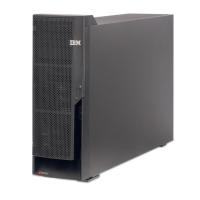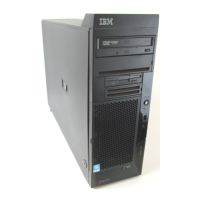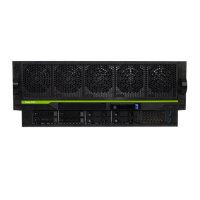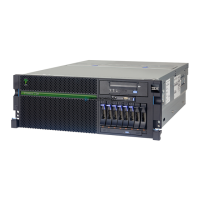Workload, capacity, and performance 45
Draft Document for Review October 18, 2004 5486wrkperf.fm
Processor CPW: Represents maximum relative performance running
commercial processing workloads for a processor configuration. Use this
value to compare relative performance between models with the same or
different number of processors.
5250 CPW: Represents the relative performance available to perform 5250
OLTP (interactive) workloads.
Simultaneous multithreading explained
Although an operating system gives the impression that it is concurrently
executing a large number of tasks, each processor in a symmetric multiprocessor
(SMP) traditionally executes a single task’s instruction stream at any moment.
The QPRCMLTTSK system value controls whether to enable the individual SMP
processors to concurrently execute multiple instruction streams. Each instruction
stream belongs to separate tasks or threads. When enabled, each individual
processor concurrently executes multiple tasks at the same time. The effect of its
use will likely increase the performance capacity of a system or improve the
responsiveness of a multithreaded application.
Running multiple instruction streams at the same time does not improve the
performance of any given task. Since this is the case with any performance
recommendations, results vary in different environments.
The way that multithreading is done depends on the hardware model, and
therefore, the performance capacity gains vary. IBM Eserver i5 Models 520,
550, 570, and 595 support this approach through a concept called simultaneous
multithreading (SMT). There are several distinct differences between different
types of multithreading implemented in the industry. You may find articles
discussing Intel’s Hyper-Threading, Superthreading, and other multitasking
techniques from several sources.
Older iSeries processors use an approach called
hardware multithreading
(HMT). In the hardware multithreading approach, the hardware automatically
switches between the tasks on any long processing delay event, for example, a
cache miss. Some models do not support any form of multithreading, which
means the QPRCMLTTSK system value has no performance effect. Because the
QPRCMLTTSK system value enables the parallel use of shared processor
resources, the performance gains depend highly on the application and the
Important: Limited 5250 CPW is always available for a system administrator
to use 5250 display device I/O to manage various aspects of the server.
Multiple administrative jobs quickly exceed this limited 5250 capacity.

